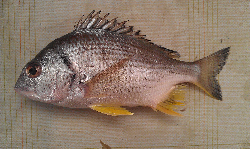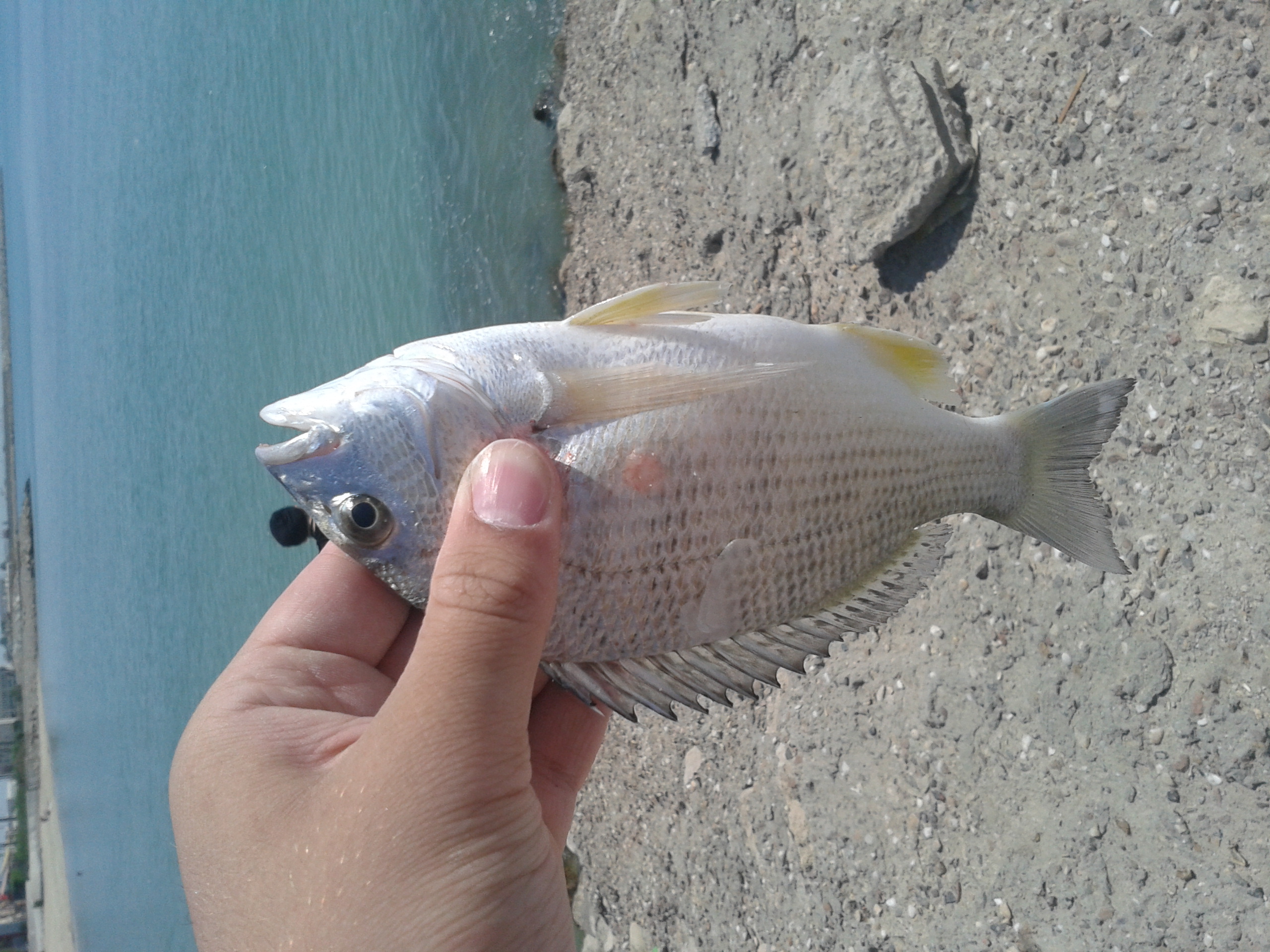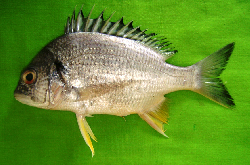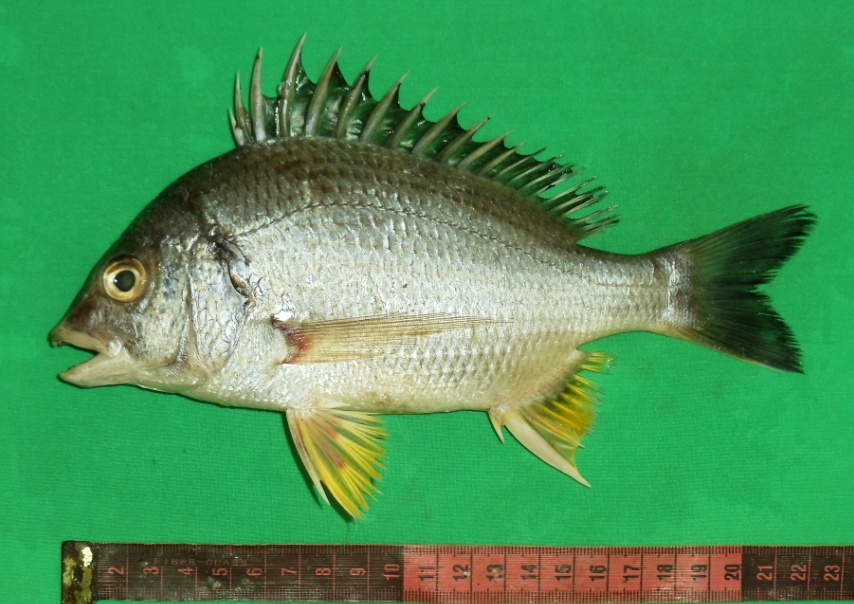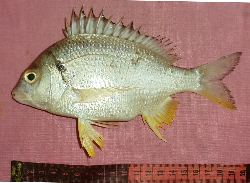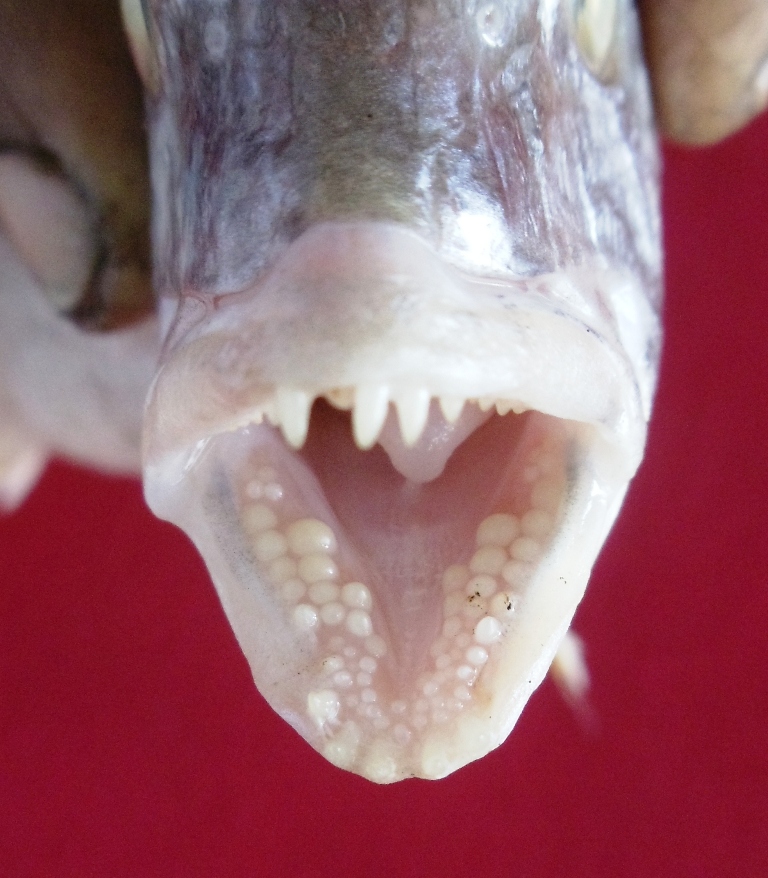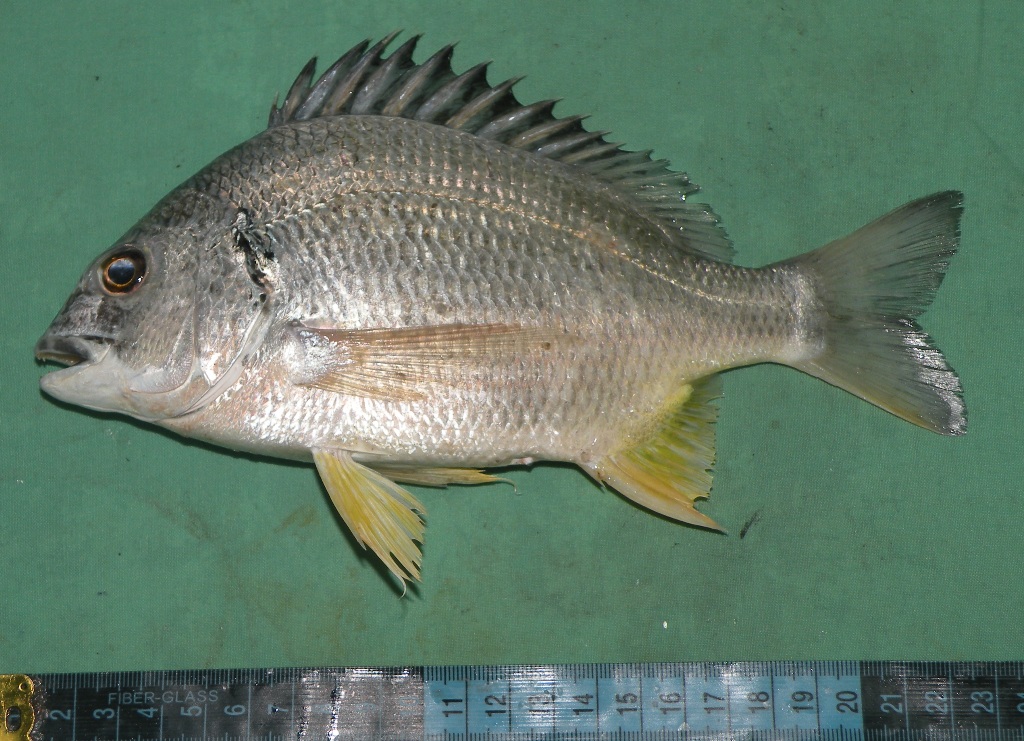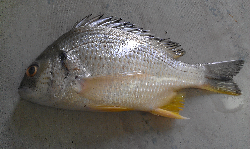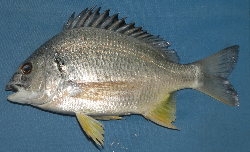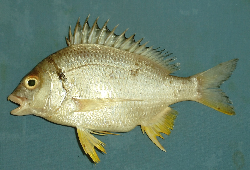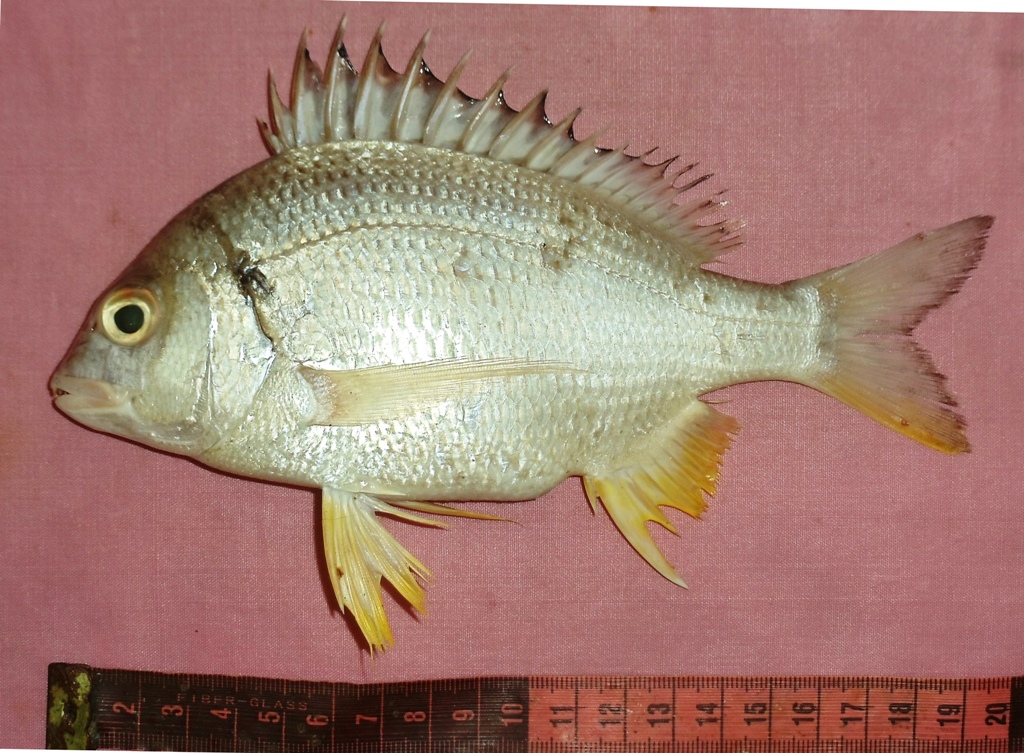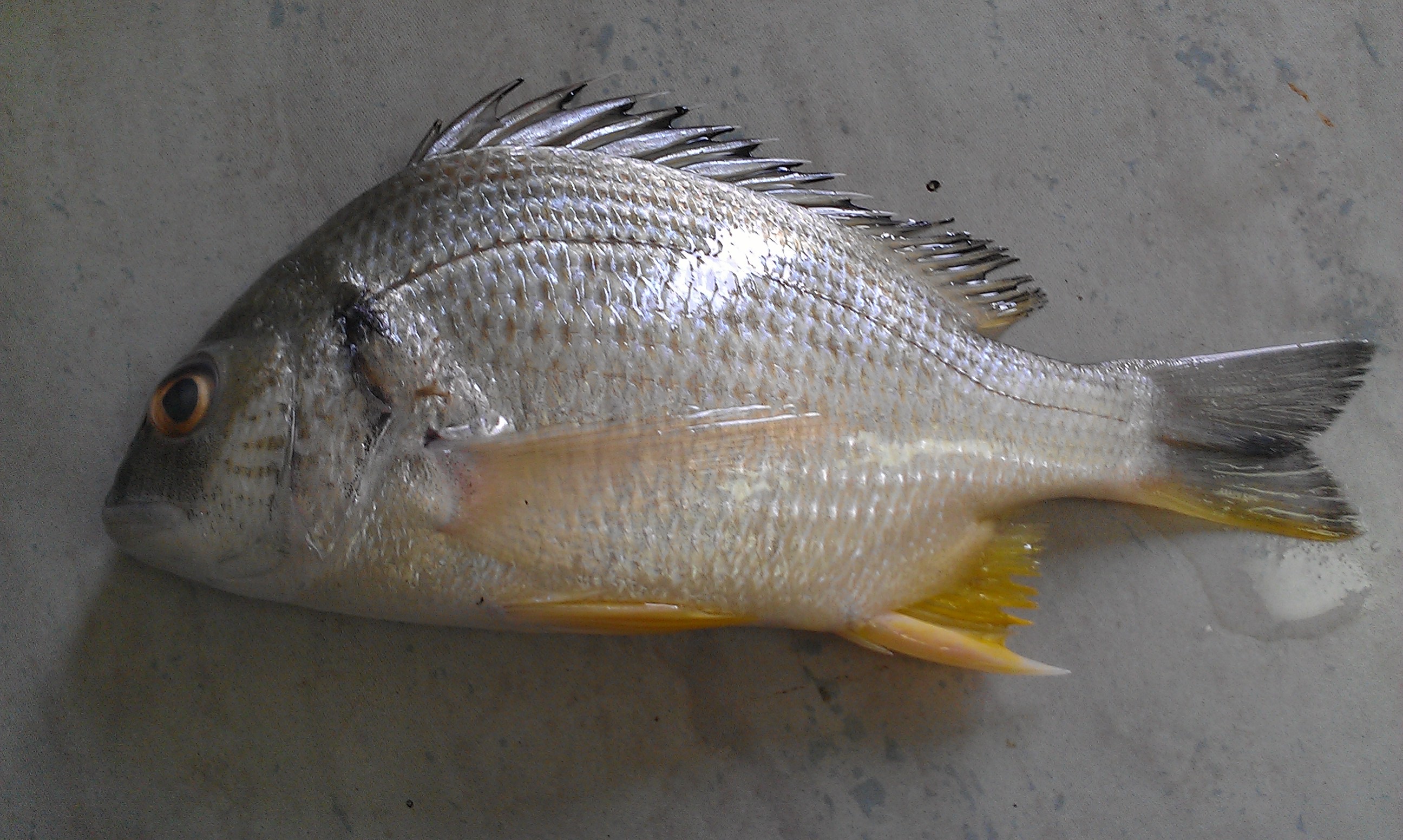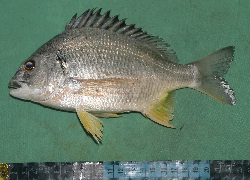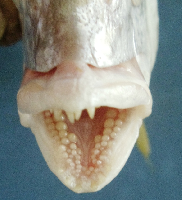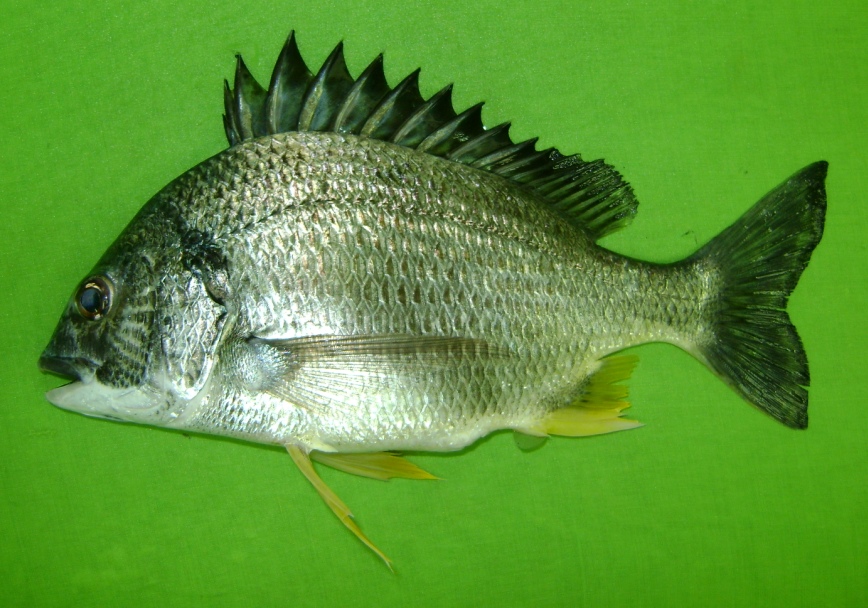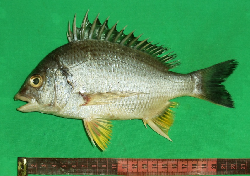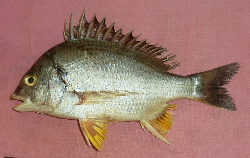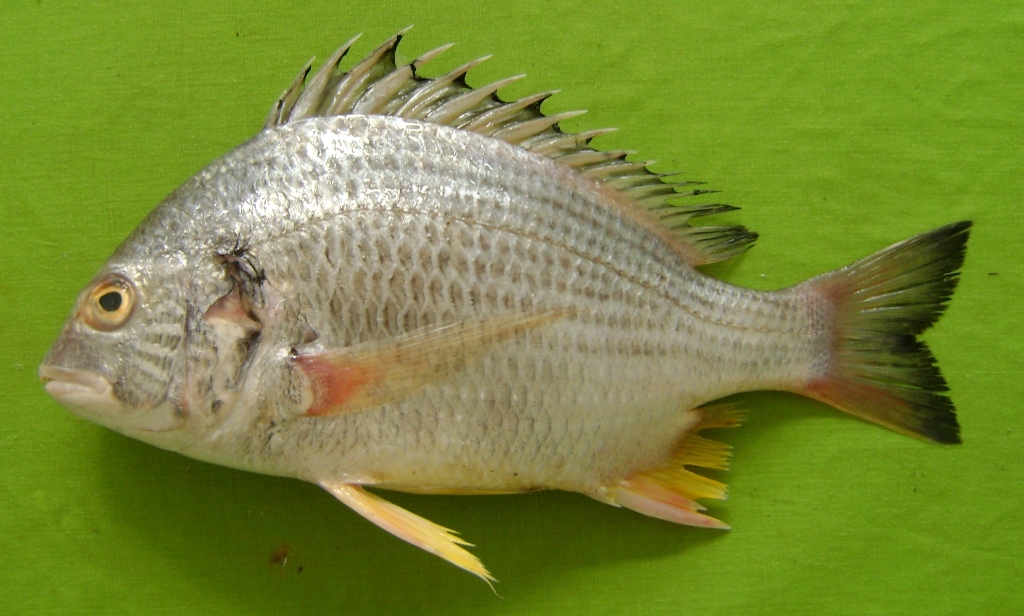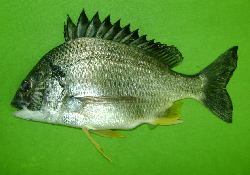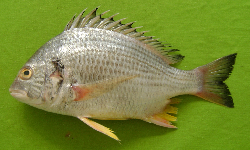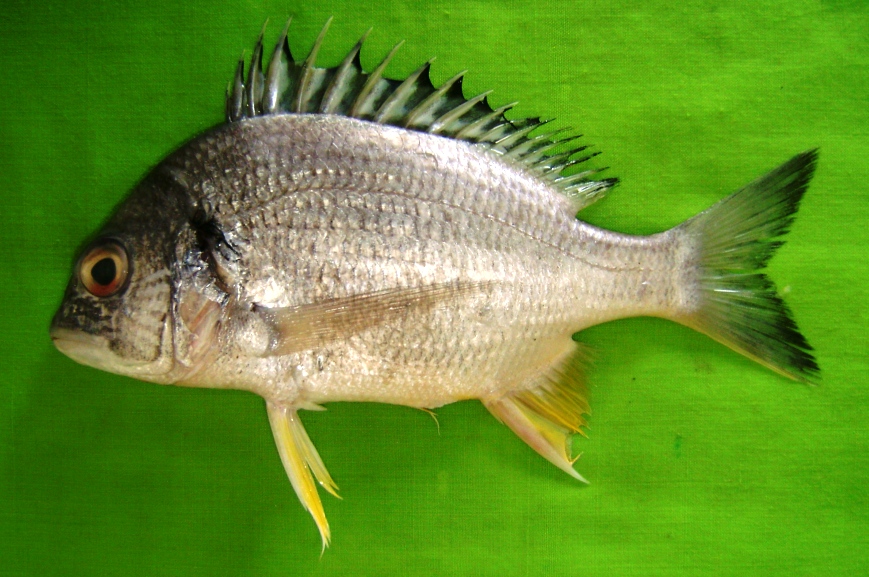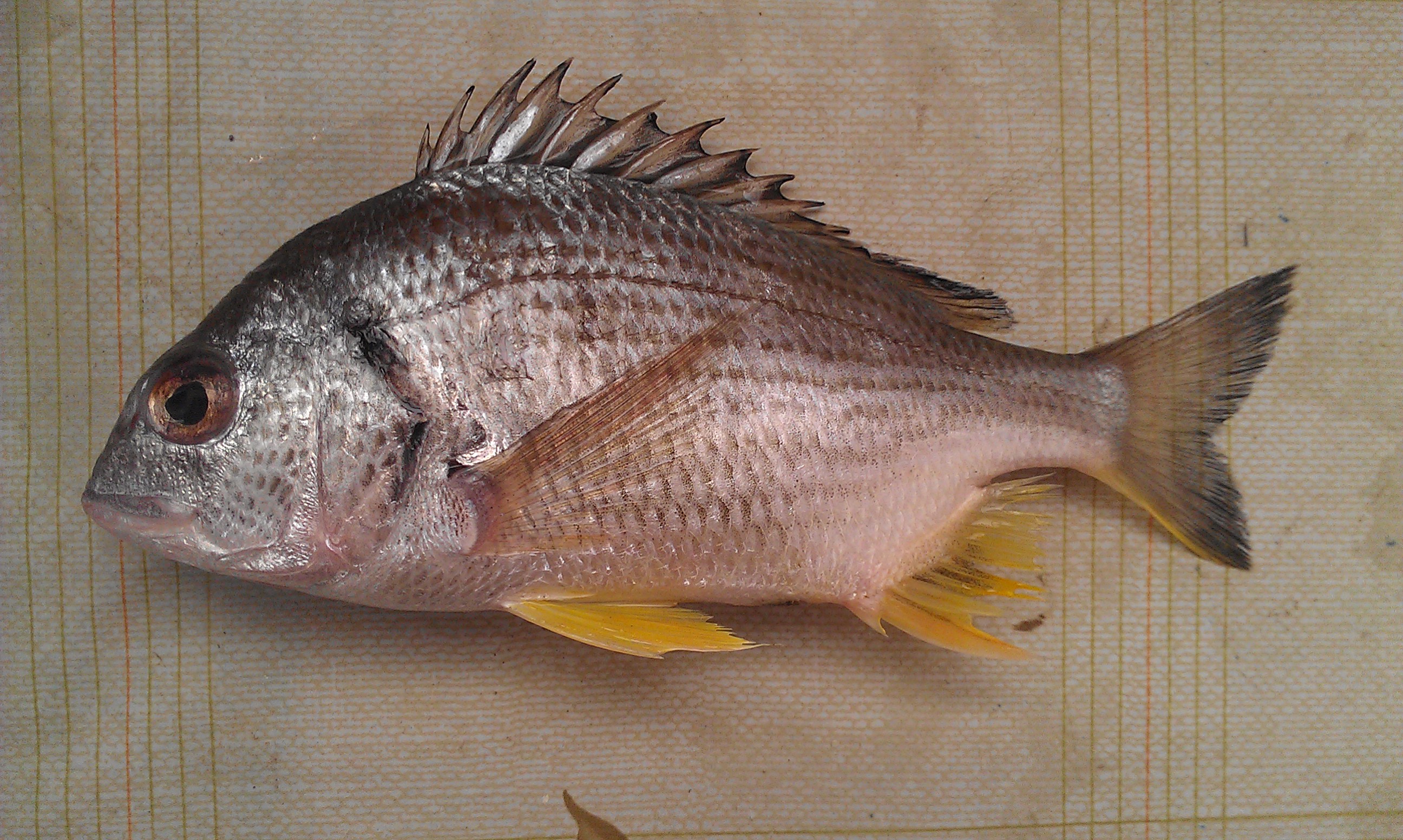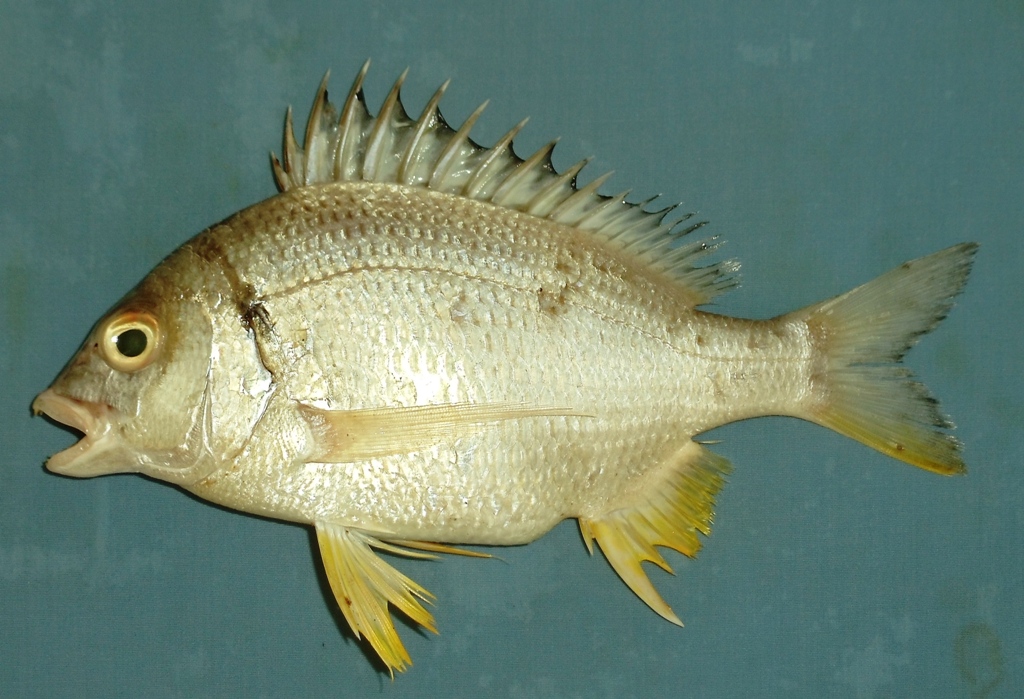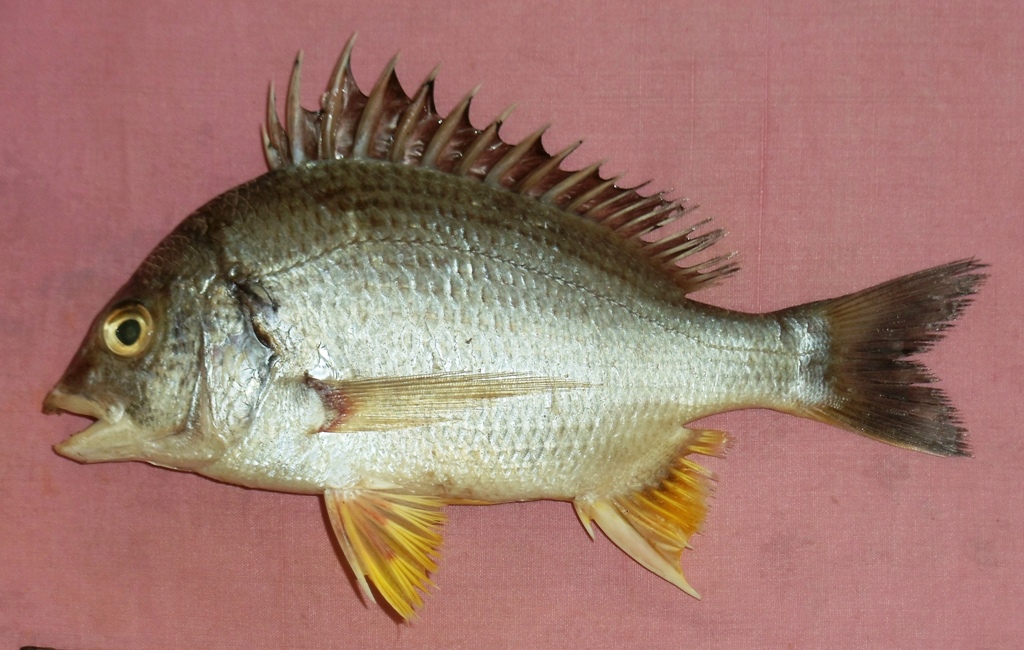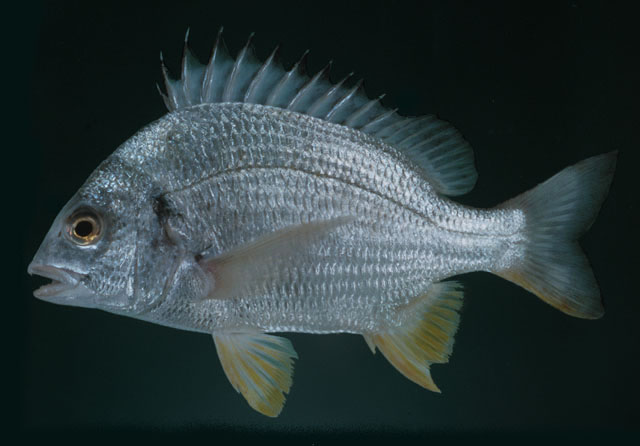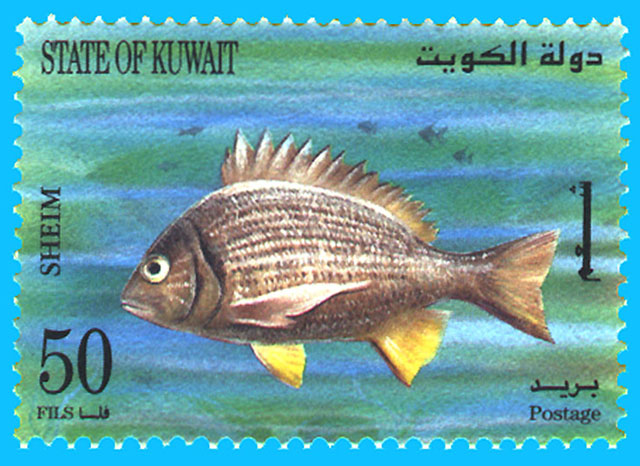Acanthopagrus arabicus Iwatsuki, 2013
Description
Dorsal spines (total): 11 - 12; Dorsal soft rays (total): 10 - 11; Anal spines: 3; Anal soft rays: 8. This species is distinguished from its congeners by the following set of characters: deep body, 2.03-2.38 (mean 2.21); D XI,11 or XII,10; scale rows between fifth dorsal-fin spine base and lateral line 4 1/2, scale rows above lateral line 4 1/2-5 1/2, scale rows below 12 1/2-13 1/2; second anal-fin spine [17.5-24.2% (mean 20·5%) of SL], 1.31-1.52 (mean 1.39) in 2AS/3AS; pored lateral-line scales 42-45 (mean 43.9); first soft dorsal-fin ray slightly longer than last dorsal-fin spine; pelvic and anal fins vivid or strong yellow, lower caudal-fin lobe yellow (lighter or whitish yellow in larger adults); no black streaks proximally on inter-radial membranes between yellow anal-fin rays; clear black blotches are usually absent just beneath inter-radial membranes between dorsal-fin rays but upper dorsal-fin membrane often with darker margin; at the origin of lateral line a weak diffuse dark blotch usually covering first pored lateral-line scale, continuing as a dense dark shading over upper part of posterior opercle (Ref. 93743).
Common Names
Taxonomic Hierarchy
Kingdom: Animalia
Phylum: Chordata
Class: Teleostei
Order: Eupercaria/misc
Family: Sparidae
Genus: Acanthopagrus
Species: Acanthopagrus arabicus Iwatsuki, 2013
Climate Zone
Location
Biology
Feeds mainly on echinoderms, worms, crustaceans and mollusks. Mainly exploited by artisanal fisheries. Sold fresh in markets (Ref. 3507).
Habitat
neritic
Conservation Status
Least Concern
Threat to Humans
No Data
